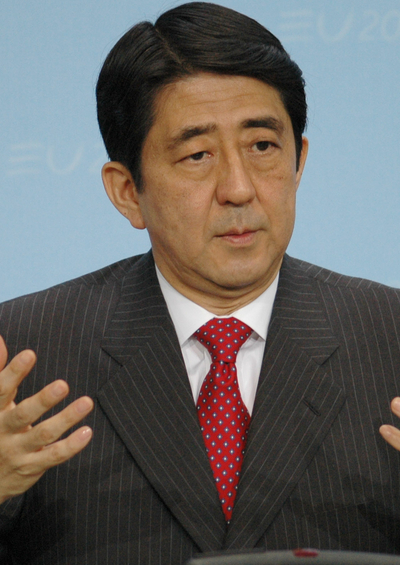How the Clintons Pivoted America
Bill Clinton’s repositioning of the Democratic Party two decades ago continues to leave it adrift.
November 18, 2016
To understand the roots of the collapse of the Clinton machine’s support among voters, one must must simply understand one thing: The words “pivot” and/or “reset,” so often associated with foreign policy maneuvers by the Democratic Party (including the now infamous “reset with Russia” or the “pivot to Asia” were mere sideshows to the real pivot the Clintons executed.
The real “pivot”
The real “reset” or “pivot” that the Clinton family has brought about occurred at home, in the domain of American politics over the past quarter century.
The innovation brought on by Bill Clinton back in the early 1990s was that he no longer wanted to leave the Republican Party as the dominant recipient of all that pile of corporate money sloshing around American politics. Bill Clinton simply wanted to have a “fair” share of it for the Democrats.
In reality, the maneuver was a sellout and betrayal of the Democratic Party’s core values and core constituencies — a shift that returned as a boomerang in 2016.
Less progressive than Bush I
Clinton’s shift in the political alignment of the Democratic Party required him personally to do something unheard of until that time when he entered the Oval Office in 1992.
Even though he was presumably a left-of-center president, Clinton decided that he would govern by positioning himself to the right of his predecessor, the Republicans’ patrician president George Herbert Walker Bush.
During Bush Sr.’s lone term – which lasted from 1989 to 1993 – he instituted new environmental protections, as well as disability and maternity labor regulations, and he wound down the Cold War and promoted multilateralism in foreign military ventures.
By contrast, Clinton – the man who had ostensibly defeated Bush from the center-left – perplexingly chose to extend the conservative Reagan Revolution. He did so by conceding to many of Reagan’s staunchly conservative rhetorical claims and policy aims.
As a result, Democrats all of a sudden regaled minority voters and the white poor with attacks on the purported decadence of welfare recipients, as well as various conservative “reforms” of Social Security. Clinton effectively ended up doing the Republicans’ bidding.
Political loyalty via wealth creation
Bill Clinton was not one to worry. And most of the Democratic Party machinery – all those professional posters, campaign advisors, party apparatchiks, Capitol Hill staffers – were only too happy to go along with this pivot in party ideology.
Bill Clinton’s repositioning had fortuitous, rain-making effects for their personal balance sheets. In the 25 years since the Clintons have ruled the Democratic Party roost, many of their core associates have become rich — from being involved in the business(!) of politics.
Obama stayed in the same tradition
That repositioning of the Democratic Party continued under Barack Obama. The most shameful moment during his two-term tenure came when, in January 2013, Obama opted to make the top level of marginal income tax rates start at $450,000 in annual income instead of $250,000. Even his Republican challenger the previous year, Mitt Romney, had not pushed for a top margin income level that high.
But no matter how hard and smart the Democratic Party machinery focused with a great deal of self-satisfaction on its “ground game” at election time and deployed its social media skills in the 2016 race, it was in for a rude awakening: the American electorate may be distracted a lot of the time, but not all the time.
The November 2016 election results show working-class America finally waking up from its long sleep. Unfazed by the never-ending rhetoric from the Clinton machine, voters realized one stunning fact about the 2016 presidential election: no matter whether Clinton or Trump were to win, a Republican would serve in the White House.
Yes, Trump may be crass and unpolished, but that’s what the American people often feel like themselves. The Clintons seemed so … French, always having some twist up their sleeve.
And so it was that the American people made a deliberate choice: Let’s opt for the new thing.
Even middle class voters felt that they had been sold out by the Clintons.
Infrastructure still not fixed
If one wants to gauge the ineffectiveness of the Clinton machinery over the past quarter century, then nothing expresses the problem more than this fact: Back in 1992, Bill Clinton ran a campaign based on the three D’s – the deficits in the U.S. federal budget, trade and infrastructure.
The one issue among them that he actually dealt with first (and effectively) was a surprising choice for a Democrat – particularly after Reagan’s unprecedented and unfunded arms spending spree a decade earlier: Clinton tackled the budget deficit. One would have thought that his primary choice would have been the infrastructure deficit.
In his defense, Bill Clinton would argue that the Republicans, who took over Congress two years into his presidency, just didn’t let him invest more in infrastructure.
The irony now, 25 years later, is that Barack Obama pleaded his case the same way on why there is so little infrastructure investment — the Republicans just won’t let me.
Ineffective Clintons
This created serious doubts about the effectiveness of the Clinton/Obama machinery. Many voters in swing states feel they have had enough of all those mellifluous towers of words about actions that the Clintons say will be taken – and then, once in office, don’t materialize. Other than that the Republican establishment once again pretty much has its way, even if a Democrat occupies the White House.
One could call that a spellbinding testament to political impotence.
Smart Republicans
Republicans, for their part, appreciated the highly concessional Clinton/Obama political style. But they didn’t let on. They kept complaining bitterly about the Clintons’ and Obamas’ presumed intent on making the United States a socialist country.
Republicans knew all along that the argument is completely overblown. But they played their role to perfection, attacking the Democrats as “leftists,” while letting them implement many elements of what used to be classic Republican policy prescriptions.
The ultimate reality in the American body politic since the arrival of the Clintons on the national and eventual global political stage is simply this: Willingly or unwillingly, the Republicans have managed to co-opt the Democratic Party.
Takeaways
Forget Asia. The biggest “pivot” in US politics in decades remains the Clintons’ repositioning of the Democrats.
If the Clintons were “progressives who get things done,” they would not still be running on unmet 1992 pledges.
The Republicans have co-opted Democrats into enacting the conservative agenda.

